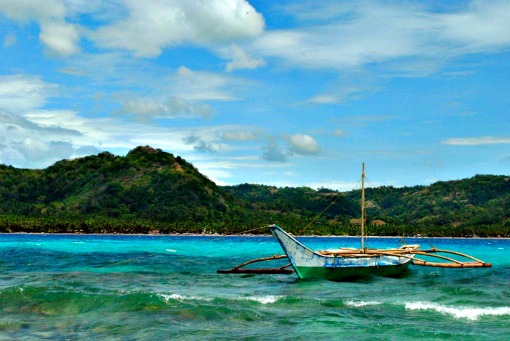Nogas’ Timeless Charm
If the ripples of the seas around Nogas Island, San Jose De Buenavista, Antique Province could talk, these would fill a big book and wonderful stories of the past and present-day Anini-y would be woven.
But listen, there’s a story that is still in full blast. The Fiesta sa Puro it Nogas has this amazing event that takes place every year, specifically every May 17.
“Gaze into the fire, young one. Listen to me and I will tell you...”
As early as 6 a.m., all the boats, big and small, are prepared to cruise the seas across Nogas Island where a Holy Mass, will be held in honour of Nuestra Señora de Guia y Buen Viaje. The tradition of bringing foods and fun activities to the island had been practiced since time immemorial. In the midst of merriment, the parishioners and their visitors are reminded that the island still needs care and protection. Its preservation and the assurance that nothing is damaged in the Island should be kept in mind so that in the future, our younger generation will have a place to come back to.
Thus the main event at the Island, besides from feasting on foods that are in excess during the Barangay Poblacion Fiesta, is the “search” for “Engkantabay” and the “Pintanod”. The “engkantabay” is an enchanted lady-guardian of the seas around Nogas and Anini-y. “Engkantabay” is a coined word from engkantada or fairy, antabay or watcher and baybay or sea, while “pintanod” is a male warrior with nature-painted body that also guards the vicinity of Anini-y and Nogas. These are the “personas” that keep watch over the natural endowment of Anini-y and Nogas. It must be noted that the Island is the only remaining uninhabited island in the southern portion of Antique. It has white sand beaches and is almost covered with corals and mangroves.
The contest, by the way, is a way of “searching” for the best engkantabay and the best pintanod which is part of the Nogas Island Camp Challenge which measures abilities in the field of culture, adventure, marine biodiversity and personality development.

Nogas Island, Antique Province, Philippines via oamulofied.wordpress.com
The expected participants or contestants maybe taken from the visitors or the local residents with no particular preference to beauty, physical disability or age. But probably, the contestant should not be under 18 years old. Members of the third sex, or even those pretending to be one, as well as those who are drunk, are not allowed to join. This was premised from the concept that an engkantabay or a pintanod is a wholesome “human” being tasked to guard the nature’s gift to Anini-y, i.e. the Island of Nogas. Besides the big share of the percentage of the criteria (50%) calls for a “pagka-angayan” or “pagka-pinasahe” or roughly translated, somebody who is unique and fit to become the guardians of the sea.
The “pintanod’s” team composed of the participant himself and his pool of artists are each given three primary color body paints, white latex and black tinting paint. The contestant’s body should be painted with these to make him appear like a nature’s painted warrior.
Presentation of talent is optional but it has nonetheless a 10 percent weight to the total score. The artists can also add props and decorations to the “pintanod” provided these are taken or can be seen within the island.
On the other hand, the team of the “engkantabay” is given two cuts of cloth with different colour and thread, needle and safety pins to be used to “transform” their contestant into the enchanted guardian of the seas. The “engkantabay” is also expected to present her talent, but is not forced if she has none. And her artists may back her up in the talent presentation, when needed.
A panel of board of judges may be selected from among the visitors. These are the persons whose identity and qualifications are fit to choose from among the contestants the rightful “owner” of the titles “Engkantabay” and “Pintanod”. Theirs is the arduous task of throwing the questions during the interview portion. Their judgments are final and unappealable.
For this short moment, the Island of Nogas came alive with people enjoying the endowment of nature. They savoured the fresh air and the cool shades of the trees which are abundant in Nogas.
After the merriment, they left with happier impression that somewhere in this side of the planet, there is still an undisturbed place that deserves protection and preservation, i.e. the island of Nogas, which forms part of the tourism mecca in the southern part of Antique.
They are lucky because they are gifted with nature’s bounties, and they have enchanted stories to pass on to the next younger generation. (PNA) CTB/AJP/Leah Marlie Pagunsan-Tambanillo


